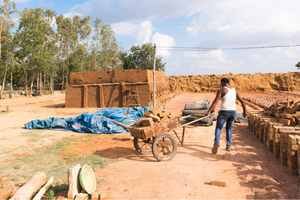Work demand under the Central government’s flagship NREGA scheme reduced marginally by 2.26% to 2.07 crore households in January 2023 from 2.12 crore in December 2022, official data show. When compared with the peak work demand seen in June last year (3.17 crore), however, the drop in work demand under NREGA was steep at nearly 35%. Till the time agricultural jobs pick up in February, say experts, the demand will be under stress.
NREGA work demand in FY23
| 2022 April | 2.36 crore |
| 2022 May | 3.07 crore |
| 2022 June | 3.17 crore |
| 2022 July | 2.04 crore |
| 2022 August | 1.60 crore |
| 2022 September | 1.67 crore |
| 2022 October | 1.55 crore |
| 2022 November | 1.85 crore |
| 2022 December | 2.19 crore |
| 2023 January | 2.07 crore |
On the other hand, when compared with the lowest monthly demand this financial year, of 1.55 crore in October, the demand seen in January was 34% higher.
Recall here that the government has lowered the Budget allocation for the scheme in its Budget for 2023-24. The Budget, presented by finance minister Nirmala Sitharaman on February 1, 2023, has earmarked Rs 60,000 crore for implementing the rural job scheme in 2023-24, which is nearly 18% lower than the FY23 Budget Estimate of Rs 73,000 crore and more than 32% less than the FY23 Revised Budget of Rs 89,400 crore.
The NREGA scheme, which guarantees 100 days of employment to one member of a rural household, is funded by the Centre, but states define the eligibility and the minimum quantum of work required to earn a day’s wages under the scheme.
Chief Economic Advisor V Anantha Nageswaran on February 6, 2023, justified the Budget cut for the scheme, saying the work demand under NREGA was sure to decline as economic activity improves.
“One of the reasons why allocation for NREGA was lowered is because there is a much larger substantive increase in allocation particularly for PMAY (rural) and the Jal Jeevan Yojana… so, the expectation is that the rural workers would be able to find jobs in these projects,” he said. “If they (rural workers) don’t get absorbed (in PMAY or Jal Jeevan Mission)… we can accommodate them through higher allocation in NREGA since it is a demand-driven programme,” he added.
Meanwhile, rural development minister Giriraj Singh said the NREGA was a demand-driven scheme, and the government had always allocated sufficient funds for the programme.
“Those criticising the (Budget) allocation should understand what the MNREGA is before saying that the allocation has gone down. In 2020, we had only Rs 62,000 crore allocation and the expenditure was Rs 1,12,000 crore. Every year, the MNREGA budget (allocation) is around Rs 70,000 crore,” Singh told media on February 9, 2023.

An alumna of the Indian Institute of Mass Communication, Dhenkanal, Sunita Mishra brings over 16 years of expertise to the fields of legal matters, financial insights, and property market trends. Recognised for her ability to elucidate complex topics, her articles serve as a go-to resource for home buyers navigating intricate subjects. Through her extensive career, she has been associated with esteemed organisations like the Financial Express, Hindustan Times, Network18, All India Radio, and Business Standard.
In addition to her professional accomplishments, Sunita holds an MA degree in Sanskrit, with a specialisation in Indian Philosophy, from Delhi University. Outside of her work schedule, she likes to unwind by practising Yoga, and pursues her passion for travel.
sunita.mishra@proptiger.com












